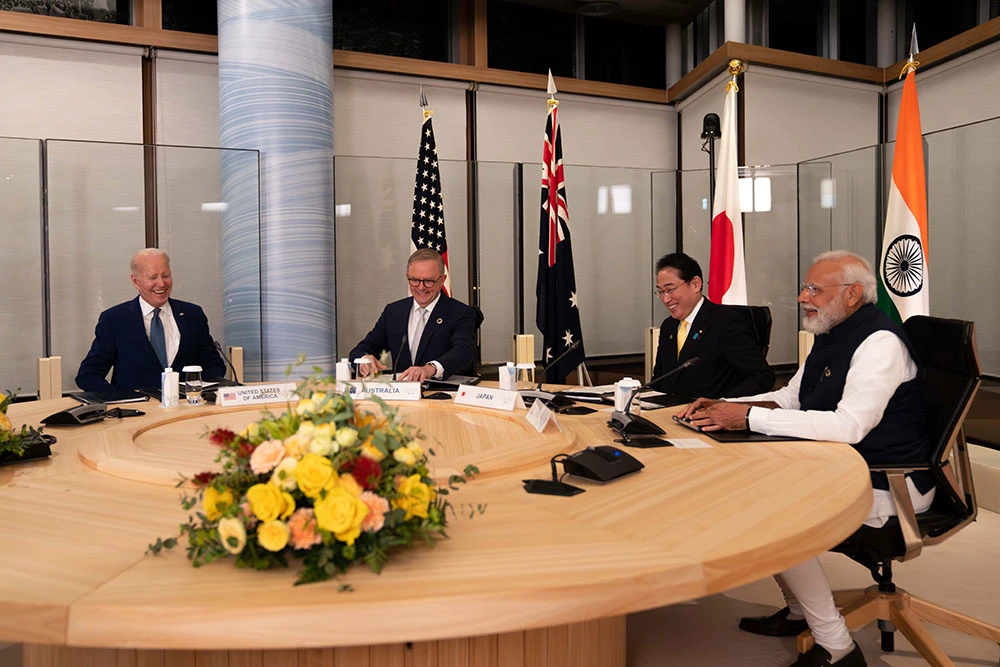
Something unusual seems to be happening in India-United States relations. Whether it is a mild tiff or a more severe rift is yet to unravel.
Several reasons seem to converge, leading to disarrays in the ties. Three of them stand out.
First, the plot to assassinate a US-Canadian citizen and alleged Khalistani separatist, Gurpatwant Singh Pannun, in New York in which, according to American officials, Indian intelligence authorities were involved.
Second, New Delhi’s perceived alliance with Russia against the background of the Ukraine war and its purchase of Russian defence systems and oil despite US sanctions.
Third, India’s continuing association with America’s bête noir, Iran, with which New Delhi recently signed a long-term agreement to run its Chabahar port.
The Nijjar controversy
Even before the Pannun murder plot unravelled, America, a member of the “Five Eyes” consisting of Australia, New Zealand, Britain and Canada, reportedly passed on to the latter intelligence on the murder last year of another alleged Khalistani separatist, Hardeep Singh Nijjar, in British Columbia, Canada.
Prime Minister Justin Trudeau accused the Indian government of being complicit in the assassination, which subsequently led to a serious diplomatic spat and inflicted considerable damage to the ties between the two major democracies.
Four of the accused in the Nijjar killing, all Indian nationals, have been arrested and are under Canadian police custody currently. It now seems that the Pannun murder plot will be New Delhi’s albatross, which Washington will happily exploit to hold India hostage to US pressure whenever needed.
Meanwhile, India and Russia have had a close relationship going back decades. New Delhi has emerged as one of the top buyers of Russian oil since Western nations imposed sanctions and halted purchases in response to the Ukraine war.
Treaty with Russia
Besides securing the S-400 missile systems to Washington’s chagrin, India is working on an investment treaty with Russia. It is progressing with a free trade agreement with the Moscow-led Eurasian Economic Union. The two countries are also holding talks on jointly producing military equipment.
“For long, we have looked at Russia from a political or security perspective,” External Affairs Minister S. Jaishankar said at an industry conference recently. “As that country turns eastwards, fresh economic opportunities are presenting themselves,” he added. Trade between India and Russia stood at $65.7 billion in the financial year ending March 2024, a 33 percent jump over the previous year.
As for Iran, noting the new 10-year agreement between New Delhi and Tehran over the development of the Chabahar port, the US State Department said all entities considering business deals with Iran “need to be aware of the potential risk they are opening themselves up to and the potential risk of sanctions.”
China-centric Quad
While some US Congressmen were openly rejoicing at the crash that killed Iranian President Ebrahim Raisi, Prime Minister Narendra Modi was among the first foreign leaders to respond, expressing shock and sorrow and acknowledging the Iranian leader’s significant contributions to enhancing the bilateral relationship between the two countries. India also announced a day of national mourning to mark the tragedy.
A major victim of the souring relationship seems to be the much-celebrated Quadrilateral Security Dialogue, known as Quad, the grouping of Japan, the US, Australia, and India—earlier touted as a bulwark against a rising China, especially given Beijing’s assertive approach in the South-China Sea.
It has been over a year since the Quad leaders met last for a summit. With Joe Biden declining New Delhi’s invitation to be the chief guest at India’s Republic Day in January, a planned Quad summit along the sidelines of the celebration had to be deferred. Another attempt to hold a summit before the beginning of the national elections on 19 April also fell apart for various reasons. No new dates have been set yet.
Entry of ‘Squad’
Meanwhile, according to analysts, an emerging quadrilateral group replacing India with the Philippines, known as the ‘Squad’, has become the core of Washington’s foreign security policy in the Indo-Pacific. Until recently, the US saw India as an increasingly indispensable nation in the global competition with China, so much so that Washington renamed “Asia-Pacific” “Indo-Pacific” a few years ago.
In early May, US Defence Secretary Lloyd Austin held a series of meetings in Hawaii with his Squad counterparts to set an “ambitious course” for peace, stability and deterrence in the Indo-Pacific. In April, the four countries conducted joint maritime drills within the Philippines’ exclusive economic zone as tensions mount between Manila and Beijing over territorial claims in the South China Sea.
Focusing on peace, stability, and deterrence in the Indo-Pacific, the Squad aims to enhance interoperability, conduct joint patrols, and strengthen intelligence and maritime security cooperation. The Philippines’ pivot towards the West, particularly under the leadership of President Ferdinand Marcos Jr., has played a significant role in driving the institutionalization of this new alliance.
“In militarized crises and conflict with China, the minilaterals like AUKUS (Australia, United Kingdom and US) and the ‘Squad’, and most importantly the US-Japan alliance will prove to be far more important than Quad”, says Ashley Tellis, a Senior Fellow at the Carnegie Endowment for International Peace.
India’s regional heft
As the US leads the new Indo-Pacific alliance to contain China’s ambitions, Beijing and Moscow are finding strength in each other. In mid-May, President Vladimir Putin and Chinese leader Xi Jinping met in Beijing and pledged a new era of partnership.
It was Putin’s first trip abroad since being inaugurated for a fifth term in March this year. Both leaders signed a joint statement expressing opposition to the US on several issues, including Taiwan, Ukraine, and North Korea, and displaying a growing convergence in values and political priorities. They sought to show support for each other and present a united front to the rest of the world.
The Indo-US fallout is happening when India’s regional heft is diminishing, with neighbours Maldives, Sri Lanka, and Bangladesh increasingly moving towards arch-rival China’s orbit. While the Quad may not be dead yet, its future remains uncertain amidst evolving geopolitical dynamics and shifting alliances in the Indo-Pacific.
As countries navigate these complexities, diplomatic engagements and strategic partnerships will continue to shape the region’s security architecture in the future. Whether India can maintain its strategic autonomy while at the same time playing a major role in shaping the future of the Indo-Pacific is anybody’s guess.
(E D Mathew retired from the United Nations as Spokesperson after working for Habitat, the International Criminal Tribunal for Rwanda, and two peacekeeping operations. Views are personal.)

